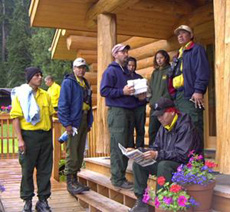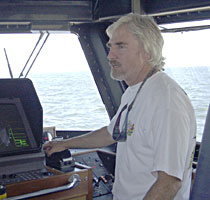Pedaling Lewis & Clark
  | 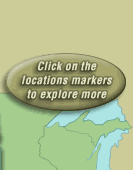 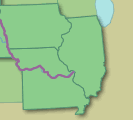 | ||
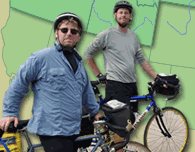 |   | ||
![]()
![]() Barrett Golding and Josef Verbanac biked the Lewis & Clark Trail in two three-week installments during the summers of 2001 and 2002. They called their two-thousand-mile trip “The Great Pains and Accuracy Tour,” after Thomas Jefferson’s instructions to Lewis and Clark to explore the Missouri River and to document what they found with “Great pains and accuracy.” Jefferson charged the pair with finding a water passage that would connect the Mississippi with the Pacific, to allow passage from Europe to Asia through North America.
Barrett Golding and Josef Verbanac biked the Lewis & Clark Trail in two three-week installments during the summers of 2001 and 2002. They called their two-thousand-mile trip “The Great Pains and Accuracy Tour,” after Thomas Jefferson’s instructions to Lewis and Clark to explore the Missouri River and to document what they found with “Great pains and accuracy.” Jefferson charged the pair with finding a water passage that would connect the Mississippi with the Pacific, to allow passage from Europe to Asia through North America.
No such passage was found, but Lewis and Clark did find a wilderness known only to its native inhabitants. In their travels along that trail, Barrett and Josef hoped to answer the question – What have we done with the woods, waterways, prairies and towns that lined the path taken by Lewis and Clark these past two hundred years?
They provided Living on Earth with interviews of people who live and work along the route today. To learn more, click the towns in the map above.
– Click here to listen to Golding and Verbanac talk about their trip.
– Click here to hear about their preparations for their trip.
– Click here to listen to a piece about the Missouri river.
Related Links:
– Josef Verbanac’s biography
– Transom.com: Golding & Verbanac's Topic
– Hearing Voices: Great Pains & Accuracy Tour
![]()
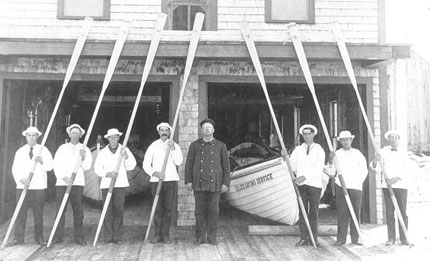
![]()
![]() Learn more about the history of this Coast Guard station by following the links below:
Learn more about the history of this Coast Guard station by following the links below:
SEARCH AND RESCUE: the Coast Guard & the U. S. Life-Saving Service
U.S Coast Guard: Station Cape Disappointment
[top]
![]()
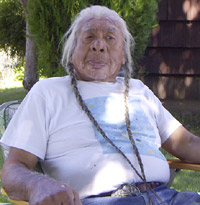 |
![]()
![]() “Little Bit of Wisdom”
“Little Bit of Wisdom”
Conversations with a Nez Perce Elder
by Horace Axtell and Margo Aragon
In A Little Bit of Wisdom, Horace Axtell, a contemporary Nez Perce elder and spiritual leader, recounts to Margo Aragon his family's history and his own personal journey. It is a book about growing up Christian while maintaining a strong tribal identity, about going first to war and then to prison, and then coming home to rediscover the Long House and the sacred practice of the Seven Drum Religion and the Sweat House. Includes black and white photography.
Click here to buy “Little Bit of Wisdom” by Margo Aragon
![]()
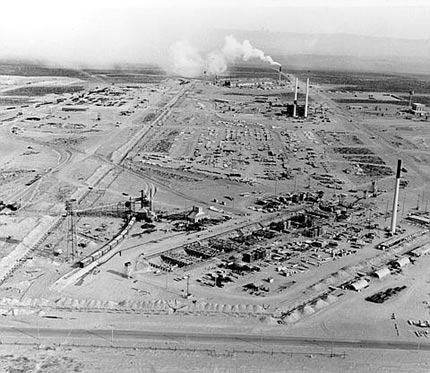
U.S. Department of Energy - Hanford Site
Hanford Watch – Introduction to Hanford issues
![]()
![]() The Hanford Nuclear Reservation is a Manhattan Project-era nuclear weapon facilities. Hanford covers 560 square miles of desert in eastern Washington, along 51 miles of the Columbia River. It is 35 miles north of the Oregon border, and 215 miles upstream from Portland.
The Hanford Nuclear Reservation is a Manhattan Project-era nuclear weapon facilities. Hanford covers 560 square miles of desert in eastern Washington, along 51 miles of the Columbia River. It is 35 miles north of the Oregon border, and 215 miles upstream from Portland.
From 1944 to the late 1980s Hanford produced plutonium for nuclear weapons, using a line of nuclear reactors along the river. Cooling water from the river was piped through the reactors, and then fed back into the river. Spent fuel rods from the reactors were dissolved in nitric acid to separate out the plutonium. Enormous amounts of highly radioactive and chemical waste were generated in the process. Since the production of plutonium ceased, Hanford's only mission has been cleanup.
Hanford is owned by the federal government and managed by the U.S. Department of Energy (DOE). Because Hanford is subject to both federal and Washington state environmental laws, the U.S. Environmental Protection Agency (EPA) and the Washington state Department of Ecology have regulatory powers.
In Hanford, Washington from 1944 to 1955 a total of 500,000 curies of radioactive Iodine I-131 were secretly released at the Hanford site. In contrast 20 curies of I-131 were emitted during the nuclear accident at Three Mile Island.
[top]
![]()
St. Gertrude Monastery - Cottonwood, ID
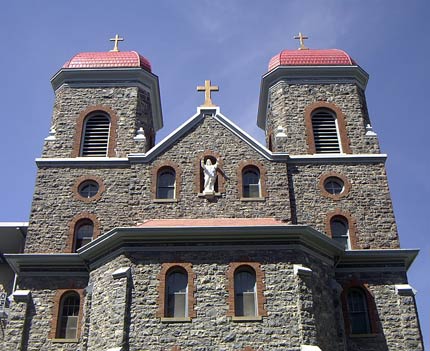
![]()
![]() To learn more about the St. Gertrude Monastery, follow the links below:
To learn more about the St. Gertrude Monastery, follow the links below:
The Historical Meseum at St. Gertrude
![]()
Blackfeet Firefighters - Lochsa Lodge (Clearwater Forest), ID
Filmmaker documents an elite American Indian firefighting crew
Documentary Honors Blackfeet Nation Firefighters
Question: In what community is there one wildland firefighter for every eight residents?
Answer: The Blackfoot Indian Reservation in Montana, where about 8,000 people live.
[top]
![]()
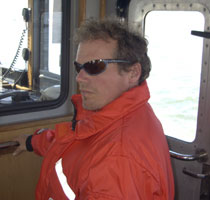 First Mate, John |
Phil O’Shaughnessy |
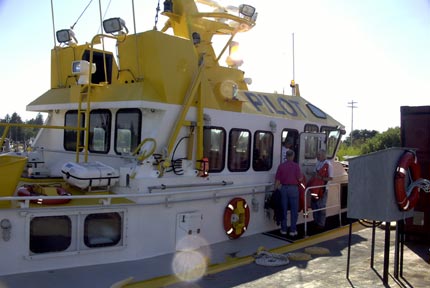
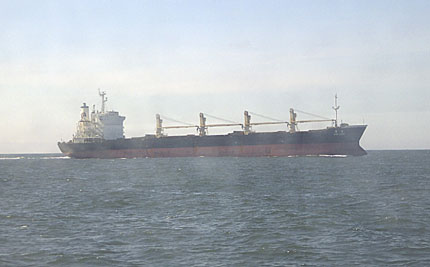
![]()
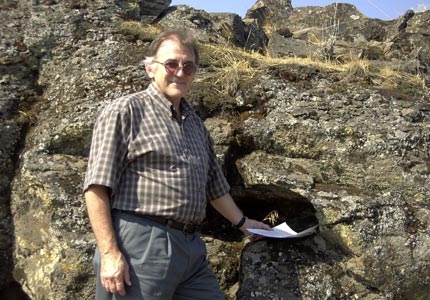
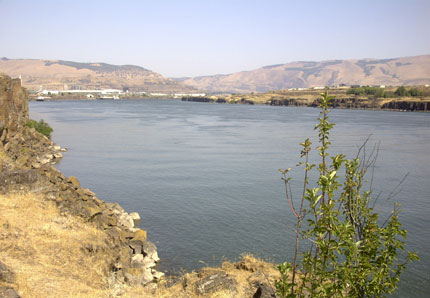
[top]
Back to the series and features homepage
Living on Earth wants to hear from you!
Living on Earth
62 Calef Highway, Suite 212
Lee, NH 03861
Telephone: 617-287-4121
E-mail: comments@loe.org
Newsletter [Click here]
Donate to Living on Earth!
Living on Earth is an independent media program and relies entirely on contributions from listeners and institutions supporting public service. Please donate now to preserve an independent environmental voice.
NewsletterLiving on Earth offers a weekly delivery of the show's rundown to your mailbox. Sign up for our newsletter today!
 Sailors For The Sea: Be the change you want to sea.
Sailors For The Sea: Be the change you want to sea.
 The Grantham Foundation for the Protection of the Environment: Committed to protecting and improving the health of the global environment.
The Grantham Foundation for the Protection of the Environment: Committed to protecting and improving the health of the global environment.
 Contribute to Living on Earth and receive, as our gift to you, an archival print of one of Mark Seth Lender's extraordinary wildlife photographs. Follow the link to see Mark's current collection of photographs.
Contribute to Living on Earth and receive, as our gift to you, an archival print of one of Mark Seth Lender's extraordinary wildlife photographs. Follow the link to see Mark's current collection of photographs.
 Buy a signed copy of Mark Seth Lender's book Smeagull the Seagull & support Living on Earth
Buy a signed copy of Mark Seth Lender's book Smeagull the Seagull & support Living on Earth

